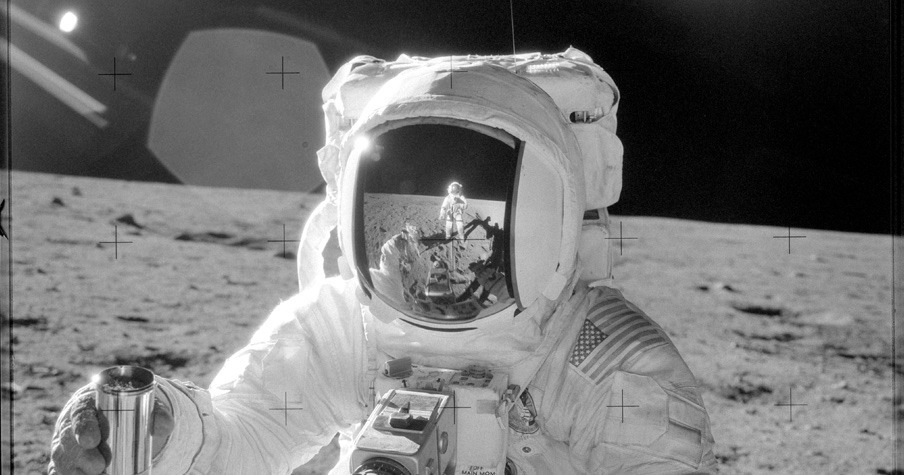
The Lunar Bible, printed on microfiche, made touchdown on the moon more than 50 years ago, tucked into an astronaut’s spacesuit.
Fifty years ago, on February 5, 1971, astronaut Edgar D. Mitchell landed on the moon as part of the Apollo 14 mission. He carried with him 300 copies of the Bible. While this accomplishment was not technically a miracle, it was possible only because of cutting-edge technology: The King James Version had been miniaturized through a then-new microfilm process that allowed all 1,245 pages to appear on a card just one-and-a-half inches square before being blasted 238,900 miles into space.
In addition to Mitchell, the person most responsible for getting the Bible to the moon was Rev. John M. Stout, who was graduated from Austin Presbyterian Theological Seminary in 1957. A NASA scientist who also served as a NASA chaplain, Stout established the Apollo Prayer League in 1968 after his friend Edward White II, an astronaut with the Apollo 1 mission, perished along with two crewmates in a fire at Cape Kennedy in January 1967.
The League—which eventually included over 40,000 members worldwide—had a threefold mission: to serve as a prayer network for astronauts and other NASA employees; to engage in humanitarian efforts; and to land a Bible on the moon. Ed White inspired that last goal, as he had told a reporter shortly before his tragic death that he wanted to do so. Stout endeavored to honor his friend’s wishes, and after unsuccessful attempts with both the Apollo 12 and Apollo 13 missions, 300 miniaturized Bibles ultimately landed on the moon with Apollo 14. Upon their return, the Bibles were distributed to dignitaries, organizations, and individuals close to the project.
The Austin Seminary Archives at Stitt Library has as part of its Apollo Prayer League collection one of the Lunar Bibles that Mitchell carried (Apollo XIV Mission Microform Bible no. 14-169, 1.5 x 1.5 inches, 1996-028). It’s not much to look at without the aid of a microscope, but its size is more than magnified as a testament to science, technology, faith, and friendship.